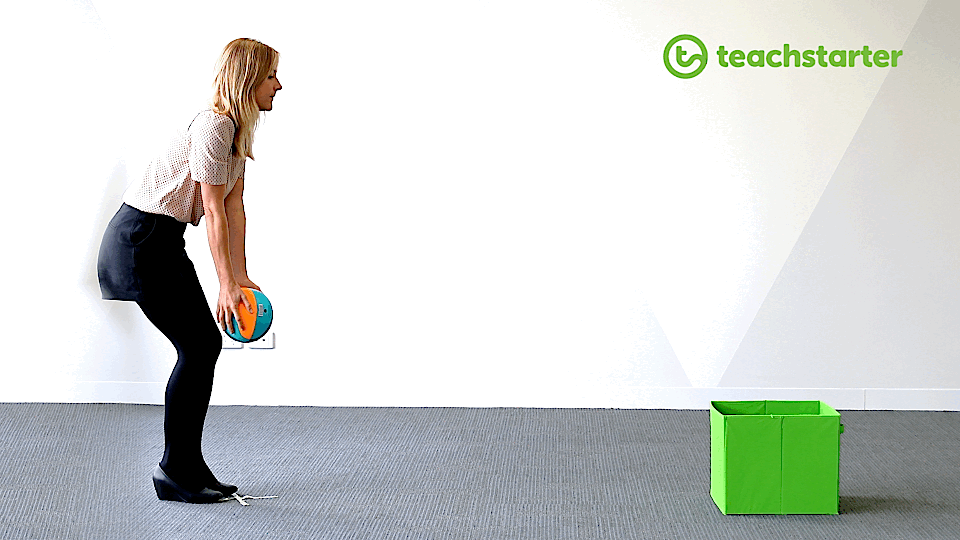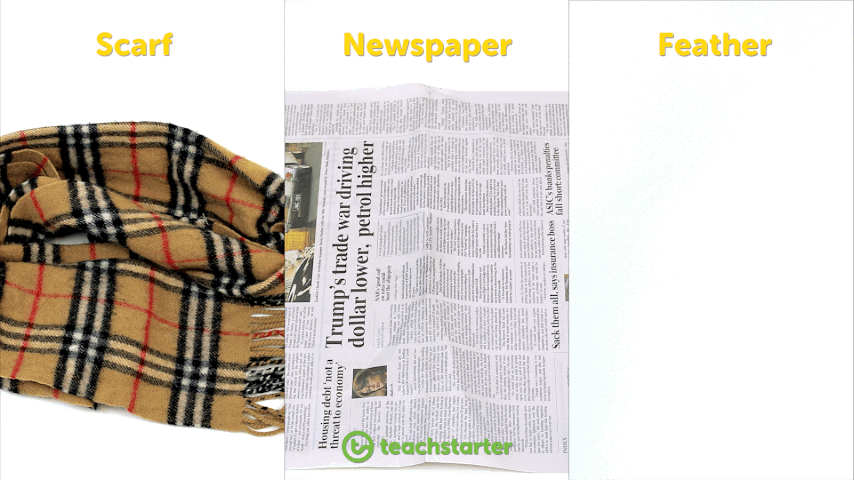You don’t have to be pulling indoor recess duty to take advantage of fun ball games and activities to use inside the classroom. These playful, humble objects come in all shapes, colors, and sizes, and so do the ways we can incorporate them into our indoor lessons or brain break activities! Why not use them to take our classroom activities up a notch?
Have you ever observed another teacher in action in their classroom and felt inspired? Have you ever thought ‘Why didn’t I think of that simple idea?’ or ‘That’s awesome! I’m going to try that on Monday’.
I never forget observing an amazing teacher using the simple idea of placing a ball and a bucket at the front of her classroom. During a math lesson, she gave her students the chance to throw a ball into a bucket when they made a contribution to the class discussion.
I think what I loved the most was the level of mutual trust and friendship among the students and teacher. It didn’t matter whether the ball went in the bucket or not. But when it did, it got a resounding cheer!
And with that my fears about playing ball games in the classroom, things crashing, and the students getting too excited dissolved. This level of camaraderie takes time to build. I get that. But, believe me, it’s worth giving it a try. Here are some of my favorite ball games to play with my students!

- Throwing and catching are complementary skills, but they are quite different in movement focus. Throwing is a target skill, while catching relies on the ability of the body to track and receive an object.
- Practicing ball skills develops good visual attention skills and hand-eye coordination skills.
- Throwing and catching a ball develops the students’ ability to pick up the information needed to predict and plan the trajectory (path) of the ball.
- Throwing and catching a ball develops the students’ ability to pay attention, to persevere, and to be willing to fail and try again.
- Practicing ball skills gives students the skills and confidence they need to join their peers in playground activities rather than feeling inadequate and left out.
- A student who has not mastered basic ball skills will often avoid ball games and miss out on opportunities for improving their skills.
Throwing and catching skills are an important component of many ball games and activities played by students in the younger grades.
Ball skill activities for early grade levels
Here are some ball skill activities for you to try with your pre-K, kindergarten, or even first-grade students:
- Students scrunch a scarf up into a ball shape. On the count of three, they throw it up in the air and try to catch it.
- Drop a feather from a height, and ask your students to take turns catching it as it flutters down to the ground.
- Make a small ball out of newspaper. Line up empty milk bottles, and ask the students to try to knock them over by throwing the ball.
- Practice throwing and catching bean bags. They do not roll and travel as far as other objects.

Ball Games and Activities to Use in the Classroom
Beach Ball Circles
Use this simple ball tracking activity to compliment your Literacy lesson and encourage your students to pay attention. It is ideal to use when brainstorming parts of a sentence such as different verbs, adjectives, or nouns.
How to do it for younger students:
- Arrange your students into a seated circle.
- Start the game by calling out a verb. Roll or pass the ball to another student.
- Encourage the receiver of the ball to call out another verb before rolling or passing the ball to the next person.
- Continue until all students have had a turn.
How to do it for older students:
- Do a stand and throw version of the above.
- If the ball is dropped, encourage the students to respond positively and to continue to play.
- Challenge the students by using a smaller ball.

Basketball Hoop
Be the hippest teacher on the block and go the extra mile.
- Set up a basketball hoop in a corner of your classroom. Clear the corner of breakable items and use a soft foam ball.
- Mark two Xs on the floor at different distances from the hoop (colored tape is good for this).
- Explain the scoring system. For example two points for getting the ball into the net from the red X and three from the blue X.
- When you catch students being amazing, give them a chance to lay up.
- If the ball goes in, award points towards a whole class reward.
- If the ball does not go in, make sure that the whole class praises the effort in the spirit of team play.
- Support less confident students by giving them the choice of taking a shot at the end of the lesson free of spectators. Alternatively, give the students the choice of a different reward.
- Top tip – secure the bottom of the net with a rubber band to stop it bouncing on its descent.
For more ideas on positive reinforcement, check out our extensive collection of Positive Reinforcement Teaching Resources.
Hacky Sack Triangles
This is a fun math warm-up ball game and is ideal to use when learning multiplication facts.
It’s simple. Just ask three students to stand in a triangle arrangement and to recall multiplication facts while passing a small ball to each other. To add an extra twist, why not encourage the students to change direction or recall the multiplication facts in descending order?
Support less able students by providing them with a multiplication fact poster from our new Multiplication Gears Resource Pack.
Hot Potato Name Game
Remember playing hot potato in school as a kid? This is a modern twist and a great way for students to introduce themselves and learn their classmates’ names on the first day of school. It is also a fun way to practice or review possessive pronouns.
The aim of the game is to pass the ball (potato) around the circle and to introduce as many people as possible before the timer goes off and the potato is done cooking. The person who is holding the ball (potato) when the timer goes off is out.
Students hold the potato and introduce themselves by saying ‘My name is Andrew’. Then they quickly choose another student and introduce them by saying ‘Your name is Sophie’ before passing the ball on to that person. If the ball is dropped, it is quickly picked up, and play continues.
Freeze!
This is a great way to introduce a new topic and new vocabulary and a ball-playing twist on musical chairs. Choose from our collection of Word Walls to find the subject that you need.
- Arrange the students in a circle.
- Place Word Wall flashcards in the middle of the circle.
- Ask the students to pass the ball around the circle.
- Close your eyes and allow a short time for the students to pass the ball around before shouting, “Freeze.”
- The student who is holding the ball when you call ‘freeze’ takes a flashcard from the pile and reads it aloud.
- Support less able students by encouraging them to link arms and work with the person sitting to their left.
Self-Regulation Focus Balls
Do you have students in your class who can’t seem to sit still or stop fidgeting?
Stress balls are a great self-regulation tool for students that can help them to focus and concentrate. What’s more, silent fidget toys can keep your students’ bodies relaxed and their fidgety fingers busy.
Make stress balls using balloons filled with rice or play dough (and don’t forget to check out all the things you can do with push bubble fidget toys!).
If you use balloons for these games, please be mindful of the environmental impact of balloons and make sure that you dispose of them responsibly.
For more ideas about how to calm your class down, read our blog 10 Ways to Calm Your Class after Lunch.
It’s time to cast aside your fears about using a ball in your classroom and to give it a try. Not only will you create a classroom that buzzes with fun, you will also be setting your students up with fundamental movement skills.







Comments